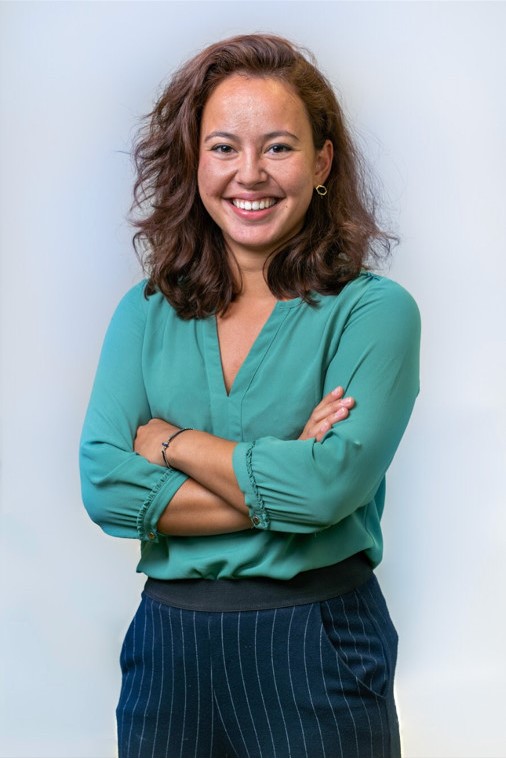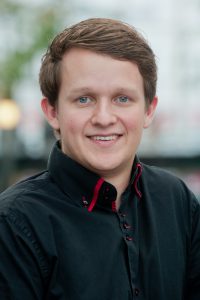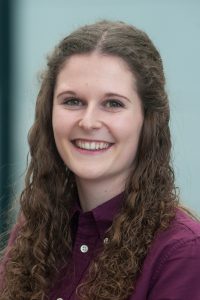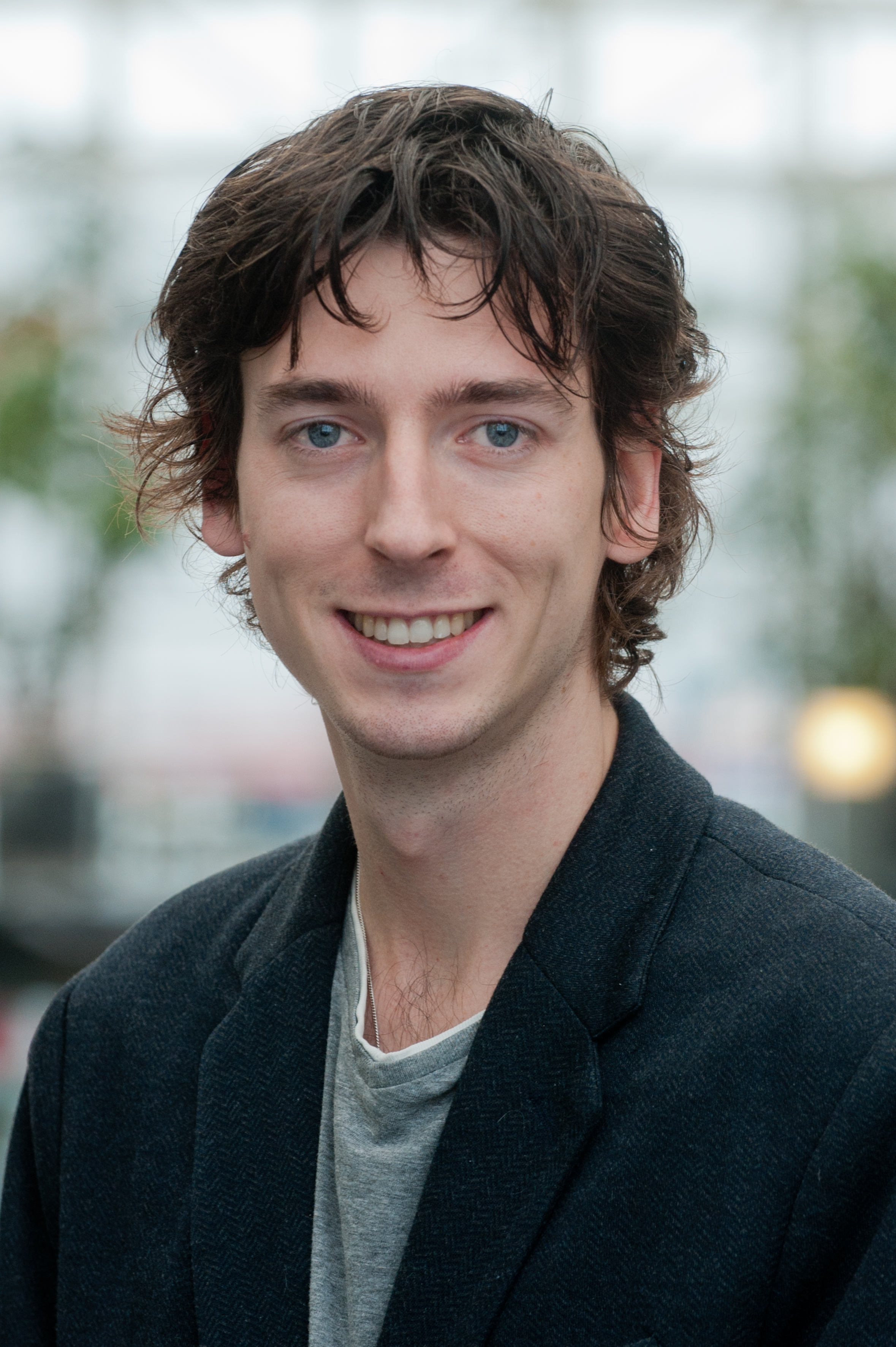Jasper van Renssen (BSc) – A-Typical Approaches
Airports Control Traffic Regions (CTR) and Terminal Manoeuvring Areas (TMA) are characterized by a dense flow of air traffic with high complexity levels. In nominal operations, approach flight path safety management consists in procedures which guide the aircraft to intercept the final approach axis, and the runway slope with an expected configuration to land. Current Single European Sky ATM Research (SESAR) publications introduced the concept of atypical approaches. Currently, atypical approaches do not have a formal definition.
complexity levels. In nominal operations, approach flight path safety management consists in procedures which guide the aircraft to intercept the final approach axis, and the runway slope with an expected configuration to land. Current Single European Sky ATM Research (SESAR) publications introduced the concept of atypical approaches. Currently, atypical approaches do not have a formal definition.
Certain abnormal flights have been observed in previous studies. These include both Non-Compliant Approaches (NCAs) and Non-Stabilized Approaches (NSA). A stabilized approach is one in which the pilot established and maintains a constant angle glide-path, an approach speed and an aircraft configuration towards a predetermined point on the landing runway. NCA approaches occur when the intermediate and final leg intercepting conditions do not comply with the prescription of the operational documentation. These approaches have found to generate difficulties for both crew and Air Traffic Control (ATC). The concern of NCA occurrence is that it may induce undesirable events such as NSAs or ultimate events such as Controlled Flight Into Terrain (CFIT).
This research will use historical surveillance data from the Amsterdam Flight Information Region, along with past studies on NCA and NSA, to define, identify, and quantify atypical approaches. The goal is to assess the frequency and occurrence of atypical approaches for Amsterdam’s Airport Schiphol’s runways 18C and 18R.
Graduated: June 2025
Pam Smit (BSc) – Disturbance of Global Navigation Satellite System Signal Assignment

Flight Management System (FMS) navigation is sometimes disturbed by certain events in the form of (un)intentional jamming and spoofing of Global Navigation Satellite System (GNSS) signals. Often through Radio Frequency Interference (RFI). Due to the growing use and dependence on GNSS in aviation a loss of navigation could be a safety issue. It is for that reason that it is needed to investigate if, and for what duration GNSS signal occurs in the Dutch flight region. The primary goal is knowing what the reliability of the GNSS signals is, as received and reported by the aircraft.
By the use of data analysis, the reliability can be tested. Messages are downlinked by aircraft using ADS-B or Mode-S links. Some of those messages contain data related to the GNSS quality, these are the so-called NIC/NAC values. This research aims to get a clear insight of the quality of the GNSS signals in the Dutch airspace.
Graduated: July 2025
Lydia Hoogendijk (BSc) – Automation in service provision: Reducing ATCO workload while achieving sustainability goals

Becoming an Air Traffic Control Officer (ATCO) is a rigorous and demanding process, requiring candidates to pass a series of aptitude, psychological, and physical assessments. The low success rate in training results in a shortage of ATCOs, leading to increased workload for those already in service. This, combined with rising air traffic volumes and the urgent need for sustainable aviation operations, underlines the necessity of enhanced automation in air traffic management. Furthermore, the transition from the AAA system to the iCAS system in the coming years is a key priority for LVNL. This research, grounded in the SESAR Master Plan 2025, explores automation opportunities within the iCAS system in comparison to the AAA system. The aim is to identify how automation can help address the challenges faced by ATCO’s, reduce their workload, and support more sustainable aviation operations, ultimately contributing to the efficiency and safety of air traffic management.
Graduated: July 2025
Rosemarijn Remmers (BSc) – Evaluating Safety Measures for Converging Runway Operations at Schiphol Airport

At many airports around the world, runways are used in different ways, including parallel, diverging, and converging operations. Each type of operation comes with its own challenges, depending on the airport’s layout and the way aircraft arrive and depart at the same time. At Schiphol Airport, due to its runway layout, not only parallel and diverging runways are used, but also converging runways. These converging runway operations require special safety measures to ensure that all aircraft can land and take off safely. These measures follow both international and Dutch safety regulations. However, maintaining a high level of safety is an ongoing process. It is important to regularly review whether these measures are effective and how they work in practice. In 2022, after thorough research, LVNL introduced new safety measures to improve the operation of runway combinations where aircraft take off and land on converging runways. These new measures are specifically designed for use in good visibility conditions and during the uniform daylight period. To ensure continuous improvement in safety, it is essential to assess how these measures are applied in daily practice and whether they effectively reduce operational risks. By analyzing real-world data and operational procedures, this research will provide insights into their effectiveness and identify any potential areas for further improvement.
Graduated: July 2025
Matthijs Slobbe (MSc) – ETA predictions based on accurate weather

The weather is something that impacts everyone on a daily basis and much research has been done to improve weather forecasting in the past. This is also the case in the aviation industry, using traditional data sources as well as aircraft measurements. Previous research in this domain has developed the Meteo-Particle (MP) model which constructs a wind field based on data collected by aircraft and UAVs. Research has also been done with new physically inspired machine-learning approaches to create wind fields. This research, with the ultimate goal being to reduce uncertainty in aircraft estimated time of arrival (ETA), intends to approach the problem of creating accurate 3D wind fields with a diffusion neural network, filling in the gaps where there is no aircraft data available. Previous models struggle with non-uniform wind fields, this new approach presents an opportunity for better reconstruction of the wind fields under these conditions.
Graduated: July 2025
Suze Garstman (BSc) – Implementing FF-ICE release 1

The concept of FF-ICE is to reduce the limitations of the current flight plan 2012 in order to support the future environment as detailed in the global ATM operational concept. Which concept is to support future ATM operations. Through the EU implementing rule 118/2021 phase 1, a.o. the introduction and use of a new flight plan will be mandatory 2025, December 31st. To reach this goal it is necessary to investigate if and how these new flight plan alterations can and will be supported by LVNL and her stakeholders. Today’s flight plan presents the ATCO and other stakeholders the initial intend of a flight. No modifications during the flight are possible. However, FF-ICE phase 1 is designed to manage this problem specially towards Trajectory Based Operations. This new flight plan will be introduced to provide richer route/trajectory descriptions to support the efficient use of air space worldwide. This research aims to identify the alterations already in place or needed within LVNL and her stakeholders to comply with EU implementing rule 118/2012.
Graduated: May 2025
Sander Poelstra (MSc) – Optimizing taxiway maintenance planning using ground control workload limits
Currently, the taxiway maintenance planning at Amsterdam Airport Schiphol (AAS) is determined based on technical necessity, and often not based on the impact on ground operations. Including the impact on operations is then done at a later stage, resulting in maintenance projects being pushed through because it is not operationally feasible. An important operational effect that depends on maintenance planning is the impact on the workload of ground controllers. This workload should not become too high due to taxiway maintenance, otherwise safety and ground capacity at the airport will deteriorate. It is therefore essential to study the relationship between the closure of taxiways due to maintenance and the workload of ground controllers in order to test the feasibility of maintenance plans. In this thesis project, this relationship is studied and it is clarified when and for how long taxiways can be closed for maintenance at AAS such that the workload of ground controllers remains within acceptable limits.
Graduated: February 2025
Vincent van Dijk (BSc) – Enhancing predictability and efficiency in the aircraft towing process through improved real-time information sharing

In complex and dynamic environments, real-time data sharing is more important than ever. It’s no surprise that Eurocontrol’s Airport Collaborative Decision Making (ACDM) system, which focuses on improving the efficiency and resilience of airport operations by optimizing resource use and enhancing air traffic predictability through real-time data sharing, is yielding positive results. For both inbound and outbound flights, this system has minimized delays caused by miscommunication or a lack of transparency among stakeholders. However, when it comes to towing operations, which share many operational similarities with flight movements, the same improvements haven’t been realized. In towing operations, it’s still common for there to be poor information exchange between stakeholders, making the process unpredictable and inefficient. This research aims to improve the predictability and efficiency of aircraft towing through enhanced real-time information sharing, potentially reducing disruptions, congestion, and APU runtime, while optimizing tow truck use and overall operational performance.
Graduated: February 2025
Tex Ruskamp (MSc) – Reducing uncertainty for Flow Management of arriving traffic at Schiphol before departure

At LVNL a Decision Support System (DST) is used to support ACC Supervisors and Flow Managers (FMP) in their decisions to issue flow regulations to the Network Manager of Eurocontrol in Brussels. The horizon at which flow regulations are typically issued is three to four hours before arrival at Amsterdam Schiphol Airport. However, at this time horizon, a significant portion of the arriving traffic is still on the ground at the so-called out-stations. Previous research has shown that a significant portion of the uncertainty in the predicted traffic demand is originated in the pre-departure phase. This research aims to develop a machine learning model that makes an improved estimation of the Take Off Time.
Graduated: January 2025
Vera Buis (MSc) – improving fog forecasts for Amsterdam Airport Schiphol using machine learning algorithms

LVNL uses a Decision Support Tool (DST) to manage and mitigate delays up to four hours ahead. Accurate weather forecasts play a crucial role in accurately predicting the airport’s capacity. Specifically low visibility conditions due to fog severely limit the capacity due to the large separation between aircraft that is needed to ensure safe operations. Fog can arise and dissipate within a matter of minutes. Besides that, it can occur on very small spatial scales, as small as a couple hundred metres. Ordinary weather forecasting tools are often incapable of capturing this very small-scale and short-lived nature of fog. Using machine learning algorithms to forecast fog poses a promising solution to this issue. Using observations on the airfield, visibility forecasts can be made for multiple areas at the airport. A small-scale, accurate fog forecast greatly increases the capability of air traffic controllers to anticipate lower capacities, and therefore timely mitigate delays.
Graduated: November 2024
Thijs Scheffers (MSc) – Effects of increased trajectory predictability by ATS Datalink on air traffic management operations in lower airspace
The latest generation of Air-to-Ground Datalink (AGDL), known as Air Traffic Services B2 (ATS B2) is now being introduced into European airspace. As mandated by the European Union (EU), effective from 31 December 2027, aircraft receiving their first airworthiness certification on or after this date must be capable of downlinking and processing ADS-C Extended Projected Profile (EPP) data, as part of ATS B2. An important element of this AGDL implementation is the availability of detailed trajectory information with flight intent. This application leads to improved predictability, as it allows for more accurate predictions of an aircraft’s intentions and destination. Increased predictability enables improvements in key areas, such as safety, flight efficiency, and environmental impact. The aim of this research is to determine the impact of this improved predictability on the design of air traffic control procedures in lower airspace around Schiphol Airport.
Graduated: November 2024
Thijs Scheffers (BSc) – Improving the outbound planning process at Amsterdam Airport Schiphol
To improve the outbound planning process of Schiphol Airport, the frequency, availability and accuracy of Estimated Landing Time (ELDT) data has been investigated. Special attention is placed on the information sharing and the calculation of the ELDT, that is calculated by Amsterdam Advanced Air traffic control system (AAA). In addition, the search for new and accurate data sources to estimate the landing time is a continuous effort. As of November, 2018, a new arrival management (AMAN) system is in use at LVNL, called Advanced Schiphol Arrival Planner (ASAP), which replaces the old arrival system, called Inbound Planning (IBP). The new AMAN has implemented different internal characteristics and processes, such as a new trajectory predictor and planning algorithm. Therefore, the new AMAN could potentially provide more accurate arrival time predictions. Both systems are compared to identify their performance.
Graduated: April 2020
Alexandru Măgdălinoiu (MSc) – Supporting executive inbound flight sequencing: improving Expected Approach Time adherence

An important bottleneck in managing inbound traffic capacity is the limited size of the Terminal Manoeuvring Area, which should not become crowded by aircraft arriving from the Control Area. This is done by arrival metering, a process entailing sending aircraft through the Initial Approach Fix (IAF) at pre-established Expected Approach Times (EAT). Currently, area controllers are required to deliver aircraft at the IAF at their EAT ± 120 seconds. Reducing this window in the near future would allow for less buffer times between aircraft to increase capacity, potentially allowing implementation of time-based separation at the IAF as an initial step towards trajectory based operations. This research aims to produce a visual decision support tool to aid the aircraft sequencing process and achieving EAT adherence at the IAF, that is compatible with the currently in use or upcoming systems used in the Amsterdam Area Control Center. To avoid significant changes to the modus operandi of controllers, the aim is to show the user the operational constraints and focus on expediting traffic. An experiment was conducted with eight professional controllers to compare the newly developed tool with a rendition of the current interface. The results are positive, indicating less deviation from the EATs in all participants and overall lower participant workload as a result of using the proposed decision support tool.
Graduated: October 2024
Lars Dijkstra (MSc) – Ground handling planning conformance prediction
Predicting whether, and if so, the extent to which, aircraft ground handling is delayed has become increasingly important in the last decade as the aviation industry aims to improve the punctuality of its flights. Timely identification of aircraft ground handling delays allows the operational partners to update their schedules and reallocate their resources. While obtaining an accurate prediction is important, understanding how a prediction comes about is at minimum equally important. After all, this yields insights into the complex and stochastic aircraft ground handling process system, consisting of many sequential and parallel activities such as fuelling, (de)boarding and baggage (un)loading, and allows the operational partners to establish mitigation and/or contingency measures using knowledge extracted from the model. This research delves into the prediction of scheduled ground handling end time adherence at intervals during an aircraft turnaround at Amsterdam Airport Schiphol (AAS). To accomplish this, the processes and variables at play in the aircraft ground handling process are first identified and assessed. Subsequently, the aircraft ground handling process is modelled using interpretable machine learning.
Graduated: August 2024
Daan van der Veldt (MSc) – Improving TOBT (Target Off-Block Time) progress by using big data

Target Off-Block Time (TOBT) plays a crucial role in Airport Collaborative Decision Making (A-CDM) as it serves as a key parameter for coordinating and optimizing airport operations. This research focuses on the importance of accurate estimations of TOBT in airport operations management. It highlights the challenges in predicting TOBT due to various factors such as passenger arrival times and ground handling processes. The complexity of these factors necessitates advanced tools capable of dynamically forecasting TOBT to enhance operational efficiency. The research involves a data-driven analysis to understand the primary causes of delays in TOBT. Through this analysis, the aim is to identify patterns and correlations among different variables influencing the accuracy of TOBT estimates. The ultimate goal of the research is to provide insights that could facilitate the development of improved prediction models for TOBT, enabling airports to better plan and manage turnaround processes. Enhanced accuracy in TOBT estimations can lead to smoother flight flow, reduced delays, and improved operational efficiency at airports. This research contributes to further optimizing airport operations and reducing the impact of delays on both airlines and passengers.
Reducing uncertainty for Flow Management of arriving traffic at Schiphol before departure.
Graduated: August 2024
Daan van der Veldt (BSc) – Analysing continuous decent operations Eindhoven.
A continuous descent operations follows, unlike traditional step-down approaches where aircraft descend in a series of level segments, a smooth, uninterrupted descent from cruise altitude to the runway threshold. Continuous Descent Operations offer several advantages, including improved fuel efficiency, noise reduction, better air traffic management, increased safety, and potential cost savings. These benefits make CDO an attractive practice for airlines and aviation authorities looking to improve the sustainability and efficiency of air travel.
This research is tasked with creating a CDO definition for the airport of Eindhoven. Using flight data sourced from radar information, the CDO efficiency is analysed, resulting in CDO performance statistics and deviations. Also, correlated factors into CDO performance are researched. Finally, these factors and potential improvements of these factors are investigated.
Graduated: June 2023
Stijn Nolst Trenité (BSc) – Feasibility of transitioning to a full RNP AR operation at Schiphol Airport, considering the benefits and challenges for all stakeholders
RNP AR is a modern navigation variant of RNP, which provides flight crew with navigation capabilities to fly along a more precise flight path during the approach with exceptional accuracy and integrity. RNP AR characteristics provide benefits to stakeholders in terms of operational efficiency, safety, airspace capacity, infrastructure, and environmental impact.
Currently, a small percentage of flights arriving at Schiphol Airport operate according to RNP AR. In the near future, LVNL would like all incoming flights at Schiphol Airport to follow these procedures. However, it is unknown if it is feasible for the stakeholders, LVNL, KLM and Schiphol Airport, to transition to a full RNP AR operation and if all stakeholders are capable of this transition within the proposed timeframe. Therefore, this research provides a thorough analysis of the transition process, including potential benefits and possible challenges which will be faced when transitioning to a full RNP AR operation.
Graduated: July 2024
Stijn Nolst Trenité (BSc) – Exemption for replacement noise limits due to closure of Russian and Ukrainian airspace
To measure the level of noise nuisance, Amsterdam Airport Schiphol has noise measurement points around the airport, each with a specific maximum noise standard that may not be exceeded. Runway usage at Schiphol depends on the destination and origin of the flight. This is determined per flight by strict coupling between the runway and departure sector or initial approach fix and landing runway. This not only saves flight time but also fuel, which reduces emissions. During the conflict with Ukraine, Russia decided to close its airspace to Western countries. This meant the Russian and Ukrainian airspace could not be flown through by certain airlines. This decision significantly impacted flight routes between Schiphol and far-east destinations. Schiphol was forced to use different departure and approach routes than usual, which changed the distribution of noise pollution around Schiphol, which meant a high chance of exceeding noise limits around the airport. Since Schiphol saw no other option than to use alternative runway usage due to the closure of the airspaces, an exemption for replacement noise limits would be requested by Schiphol at the Ministry of I&W. This research provides advice for the Schiphol Group on making the right decision regarding the exemption request and provides a comprehensive analysis and substantiation of why the Ministry should consider approving the exemption.
Graduated: June 2023
Paolo Stet (BSc) – Improving flight efficiency by using FMS data
Due to the nature of KLM being a hub and spoke carrier, a lot of importance is placed on connecting passengers at Amsterdam Schiphol Airport. Because of this, KLM operates using closely placed together bunches of arrivals and departures, such that transfer times are manageable for passengers. With an increasing amount of traffic, this often poses problems as the amount of traffic exceeds the available capacity at the airport, which leads to delays and missed transfers. In prior research, possibilities have been identified to implement inbound priority sequencing (IPS), which takes into account factors such as the potential for missed transfers. Using the priority of individual aircraft, IPS gives in-flight course corrections such that the aircraft are based on priority at the start of the approach. To make this viable, accurate predictions are required for the arrival times at the start of the approach, which have thus far been too inaccurate. To do this, the most accurate source of data for estimated landing times has to be identified, which then has to be used to obtain an estimated time at the start of the approach. For any inbound flight, this estimated time should be calculated early in the flight and be updated at least every hour until it arrives at the approach.
Graduated: July 2024
Joost Schimmel (BSc) – Complexity factors in multiple- and remote tower operations
Amsterdam Airport Schiphol currently operates with three ATC towers, including one fallback tower. The main ATC Tower Centrum (TWR-C) and Tower West (TWR-W) are used in a dual-tower operation for ATC ground handling and runway control. TWR-W handles the air traffic at runway 36L/18R (Polderbaan). LVNL is conducting a study to integrate the existing two control towers into TWR-C; the motivation behind these considerations is to reduce costs and personnel deployment. Additionally, LVNL is exploring the possibility of remotely managing multiple regional airfields from a single tower center. This includes considering the option of multiple remote towers, where two airports could be managed simultaneously from one controller working position.
Graduated: July 2024
Iskander Holtkamp (BSc) – Operational requirements for continuous descent operations from 4000 ft 
In light of the Airspace Revision Program, the LVNL wants to implement Continuous Decent Operations (CDO) to reduce noise levels and fuel consumption. A first step involves exploring the possibility for a CDO from 4000ft towards 18C, the Zwanenburgbaan. The airspace infrastructure needs to be redesigned in an efficient manner for both the pilot and the air traffic controller. This way CDOs can be flown whilst maximum runway capacity and safe separation is maintained. This research aims to investigate the operational and functional requirements necessary for the successful implementation of such operations.
Graduated: July 2024
Winand Mathoera (MSc) – Network effects of changing fuel prices and emission penalties
In recent years, the Dutch government has been shifting towards new methods of limiting the environmental effects of the aviation industry in the Netherlands. These methods range from a new limit on the discrete number of aircraft movements and a shift towards a completely new system that only relies on environmental benchmarks, such as noise nuisance and the emission of harmful gasses. These new policies are bound to have an impact on the connectiveness of Amsterdam Airport Schiphol (AAS), an airport that has established itself as a transfer hub. The aim of this thesis project is to perform an analysis to understand the effects of the future policy changes on the competitiveness of AAS as a hub. To perform this analysis, a traffic flow model is constructed in order to simulate the aviation network when subjected to the various proposed policy changes. The results will enable AAS to identify the critical tip-off points and to prepare for the predicted effects of the policy changes on the competitiveness of AAS as a hub.
Graduated: May 2024
Bob van Dillen (MSc) – Supporting Trajectory Based Operations in Aerodrome Control.
To increase airspace capacity and reduce aircraft emissions, the ATM system will move towards Trajectory Based Operations (TBO). Current research efforts in TBO primarily focus on en-route area control and hardly consider how such operations could benefit TWR operations and, conversely, how TWR operations can perhaps improve the TBO environment by better integration. In a TBO environment, trajectory information is shared by aircraft via digital datalinks. Together with the current and predicted wind conditions, this information can be used, amongst others, to enhance departure capacity, different routing to reduce noise impact, reduced dependency of converging arrival and departure runways and outbound traffic segregation techniques. This requires accurate management of the interaction of flight paths in the CTR/TMA. The goal of this research is therefore to develop a support tool for TWR control to maintain separation between departing and arriving traffic streams in a TBO environment.
Graduated: May 2024
Mithun Raghunandan (MSc) – Enhancing the success rate of Continuous Descent Operations: the added value of TP performance through Air-Ground Datalink.
The future concept for arrivals at Amsterdam Schiphol, as for many airports, is to progressively implement Continuous Descent Operations (CDO). For this, it is already known that a high degree of predictability of the arrival trajectories is needed. With new Air Ground Datalink (AGDL) technology emerging, specifically ADS-C, these possibilities are becoming within reach. However, it is unclear to which extent the integration of this AGDL provided information will enhance Trajectory Predictor performance. Moreover, the sensitivity of the managed arrival process to the predictability of the trajectories is unclear. Having a better insight in this dependency enables the further design of the technical concept by providing target performance levels. In turn, it also provides direction and input to the business case for equipage by airlines for trajectory sharing as well as ground system trajectory prediction performance. To establish a useful measurement for value added by improved predictability of the success rate, that is, the percentage of CDO’s that can be executed without ATC intervention, is envisioned.
Daan Snijders (MSc) – Effects on departure capacity of TOBT uncertainty
The assertion and updating of the Target Off-Block Time, also known as TOBT, during the handling process of aircraft affects the capacity of an airport where airport collaborative decision making (A-CDM) is used, such as at Schiphol. The research question concerns an analysis that shows the effect of both how different parties deal with the TOBT proposition and updating and the influence of information sharing on Schiphol’s supply. The assignment includes a data analysis and the challenge of creating a model to show the effect on the supply of Schiphol.
Graduated: February 2024
Reem Alhasan (BSc) – Airport Operations Center
At present, the primary stakeholders of the Knowledge and Development Centre (KDC), who are Royal Schiphol Group (RSG), The Royal Dutch Airlines (KLM), and the Air Traffic Control the Netherlands (LVNL), individually prepare for the upcoming day’s operations. They rely on their respective sources of information for this process.
It’s evident that the lack of effective communication and not sharing information creates barriers to the airport’s efficient and safe operation. Current research aims to determine the pertinent and current information from partner organizations that is presently being utilized, as well as what needs to be shared. This is aimed to enhance the operational planning process for all stakeholders involved, with the aim of providing Schiphol APOC with a well-defined framework for data usage and management and improving the accuracy of traffic predictions and minimizing delays.“
Graduated: January 2024
Wester Kuijpers (BSc) – Operational requirements Tactical Demand Tailoring
The goal of this project is to investigate and analyze the operational challenges and requirements associated with the implementation of Tactical Demand Tailoring (TDT) in the European aviation industry. TDT is a concept that involves planned inflight re-routing to optimize air traffic flow, enhance efficiency, and respond to changing conditions. The assignment aims to investigate various aspects related to TDT, including its feasibility, the parties involved, legislative considerations, and the necessary information and communication systems.”
Graduated: January 2024
Thomas Konijnenberg (BSc) – Inventory on System Wide Information Management (SWIM) to improve Flight Dispatch
The concept of SWIM, System wide information Management is a system that covers a complete change in how information is managed along its full cycle across the whole European ATM system. SWIM is expected to be an important driver for the new updated standards, information and working methods. KLM flight dispatch is 24/7 operation to ensure KLM has a safe and efficient fleet operation. Flight dispatchers prepare the whole flight and with that ensures the crew has all the required information at all time. It has been recognized that global interoperability and standardization are essential to improve the aviation business. SWIM is a system that can contribute to the interoperability of flight dispatch and for this reason the research will be to investigate if there is any available information/data on SWIM that can improve the flight dispatch operation where possible.
Graduated: January 2024
Reinier Vos (MSc) – Machine learning based trajectory prediction to support air traffic demand forecasting

Air traffic sector demand and capacity balancing is an important process to enable safe and efficient flight execution. In current operations, demand and capacity are determined based on schedules and flight plans. In reality, disruptions to flights create a different situation that may not have been anticipated by the Air Navigation Service Provider. This can ultimately cause unnecessary network regulations. This research aims to improve air traffic sector demand forecasting, by exploring machine learning-based trajectory prediction. In light of the Trajectory Based Operations concept that is developed within ATM research, a trajectory-based approach is taken to improve demand forecasts. Using available flight status messages from the Eurocontrol Network Manager, and actual recorded trajectories, a transformer neural network was built that could generatively predict flight trajectories. This model could accurately generate trajectories, outperforming the flight plan and other neural network approaches by a large margin. For demand prediction, the introduction of improved trajectories may provide only marginal improvements.
Graduated: November 2023
Jan Post (MSc) – Investigating effect on departure capacity of NM/CDM transparency
After a lull in traffic due to the COVID-19 pandemic, Schiphol and the surrounding airspace is again reaching peak capacity during its operations, leading to Network Manager (NM) regulations. When a departing flight is regulated its sequencing process by the Pre-Departure Sequencer is different from non-regulated flights, possibly leading to delays stacking and an even later Calculated Take-Off Time being issued by NM. These feedback effects are currently not well understood and some parameters in the process are not well explored in regards to finding an optimum, either local or global. In this research the A-CDM EHAM process and related systems will be modeled in order to reach new insights into the effects of varying communication time horizons and the effects of the varying data streams on the total departure capacity of Schiphol.
Graduated: November 2023
Sven Vegter (BSc) – Tactical flight planning to enhance runway load balancing.

Traffic entering AMS-FIR usually presents itself at the FIR-entry points according to their filed flight plan.
AMS-FIR has a relatively high density and complexity of traffic. Therefore, rerouting arriving aircraft inside this airspace to make an approach to a runway, other than the one most conveniently oriented with respect to their FIR-entry point, is considered undesirable. This research will provide insight into a proposed operational tool which could help LVNL improve its operation. This tool will be referred to as Tactical Demand Tailoring (TDT) in this report. It would allow LVNL to redirect the flights arriving to Schiphol tactically, after their departure, but before these aircraft enters AMS-FIR. This extends the influence LVNL has over Schiphol arrivals to outside of its area of operations.
Graduated: June 2023
Stijn Brunia (MSc) – Predicting controller workload within individual ground control sectors.
At Schiphol airport all ground traffic is handled by ground controllers, who are all working on the traffic within a specific geographical sector. There are four main sectors, but one controller can also handle multiple different sectors. This means that the number of active controller will fluctuate during the day. There is however little insight in what the workload of a specific sector will be within the nearby future. Next to this there is also little insight in how the workload of the Schiphol ground controllers effects the capacity of the taxi system as a whole. Since the taxi system capacity has a large influence on the capacity for Schiphol as a whole, more insight within the parameter of ground controller workload could be of significant use, as it can be used in deciding on what number of controller will need to be active. This research will try to create a tool in which the upcoming workload can be estimated using the planned operational data.
Graduated: July 2023
Robbert Boelhouwer (MSc) – Valdidation noise model sonAir at Schiphol
Aircraft noise is a significant problem for communities surrounding airports. Accurate prediction models are needed to estimate noise levels from aircraft operations. In this research, the accuracy of the sonAIR aircraft noise model is evaluated in predicting noise levels around Schiphol airport by comparison to measurement data from NOMOS and the current best practice modelling approach Doc29. Results show a significant but consistent underestimation of noise levels by sonAIR, mainly due to a generalisation of emission models. This research contributes to better aircraft noise predictions, which will have implications ultimately leading to a better quality of life for communities affected by aircraft noise.
Graduated: May 2023
Stijn van Selling (MSc) – Supporting Time-Based Separation and Merging in Approach Control.
Aviation as a whole is expected to grow, therefore adjustments to the current air traffic management system will need to be made. Part of these adjustments is the switch from distance-based separation to time-based separation. This will allow the airport capacity to increase when strong headwinds are present on the active runway. An increase in runway capacity will also result in less holding time required as more aircraft can land in the same amount of time, hence saving fuel and thus making for a more environment friendly operation. In order to facilitate time-based separation, the air traffic controller will need assistance in terms of decision support tools as time-based separation is not easily visualised on a 2D map. This research will thus try to design, implement and test such a decision support tool in order to support time-based separation in approach control.
Graduated: April 2023
Eneko Rodríguez (MSc) – Investigating the effects of Flexible Use of Airspace availability and plannability on fuel efficiency
All military airspace in the Amsterdam Flight Information Region (FIR) falls under the concept of Flexible Use of Airspace (FUA), which no longer considers airspace as purely ‘civil’ or ‘military’ but rather as a continuum to be allocated temporarily according to user requirements. The complexity of FUA lies in the challenge to harmonize the airspace usage according to these requirements, which largely contradict one another. On the one hand, the military user benefits from using the airspace flexibly, as the effectiveness of their missions and exercises depend on the availability of weather and equipment conditions. On the other hand, the civil users benefit from a high plannability to efficiently execute their operations. By modeling the fuel consumption of civil traffic, the effects of availability and plannability of the FUA in Amsterdam FIR can be computed. While FUA availability determines the route followed by a flight, FUA plannability determines how early the true trajectory is known. Announcing the FUA usage earlier results in avoiding to carry a surplus fuel, which increases the weight and thus fuel burnt of the aircraft. By understanding these effects, new guidelines of FUA usage and plannability may be proposed in the context of the ongoing Dutch Airspace Redesign Programme.
Graduated: August 2022






















 Eline Bakker (MSc) – Design and Evaluation of a Visual Interface for an En-Route Air Traffic Control Merging Task
Eline Bakker (MSc) – Design and Evaluation of a Visual Interface for an En-Route Air Traffic Control Merging Task – Creating more capacity at Amsterdam Airport Schiphol by reducing planning inefficiencies amongst KLM, LVNL and AAS
– Creating more capacity at Amsterdam Airport Schiphol by reducing planning inefficiencies amongst KLM, LVNL and AAS – Evaluation of plan stability deviations in the flow at Schiphol airport
– Evaluation of plan stability deviations in the flow at Schiphol airport – Evaluation of peak hour capacity at Schiphol and similar airports to determine common capacity management practices
– Evaluation of peak hour capacity at Schiphol and similar airports to determine common capacity management practices – Schiphol noise analysis for fixed arrival routings
– Schiphol noise analysis for fixed arrival routings 
 – D-1 process impact evaluation
– D-1 process impact evaluation Casper Moll (BSc) – Capacity analysis of airport slot planning and air traffic demand
Casper Moll (BSc) – Capacity analysis of airport slot planning and air traffic demand Marc Riebeek (BSc) – Comparison of airport slots and schedule & flight planning
Marc Riebeek (BSc) – Comparison of airport slots and schedule & flight planning – Design and Evaluation of a Visual Interface for Separation Support in Time-Based Approach Air Traffic Control
– Design and Evaluation of a Visual Interface for Separation Support in Time-Based Approach Air Traffic Control Marc Voogt (BSc) – Operational benefits since the connection of Amsterdam Airport Schiphol with the Network Manager.
Marc Voogt (BSc) – Operational benefits since the connection of Amsterdam Airport Schiphol with the Network Manager. Tessa Rietema (BSc) – Capacity requirements analysis of civil air traffic in military controlled airspace
Tessa Rietema (BSc) – Capacity requirements analysis of civil air traffic in military controlled airspace



 Roel Wouters (BSc) – Impact of Local A-CDM on the Operational Efficiency at Mainport Schiphol
Roel Wouters (BSc) – Impact of Local A-CDM on the Operational Efficiency at Mainport Schiphol Huib de Jong (BSc) – How can Schiphol transition to use of APOC in an effective way?
Huib de Jong (BSc) – How can Schiphol transition to use of APOC in an effective way? Remsey Kanis (BSc) – Analyses of deviations and variations in the ground operations due to runway changes
Remsey Kanis (BSc) – Analyses of deviations and variations in the ground operations due to runway changes Joep Boekhout (BSc) – Analysis of the effectiveness of the limitation/regulations in controlling airspace towards and from Schiphol
Joep Boekhout (BSc) – Analysis of the effectiveness of the limitation/regulations in controlling airspace towards and from Schiphol